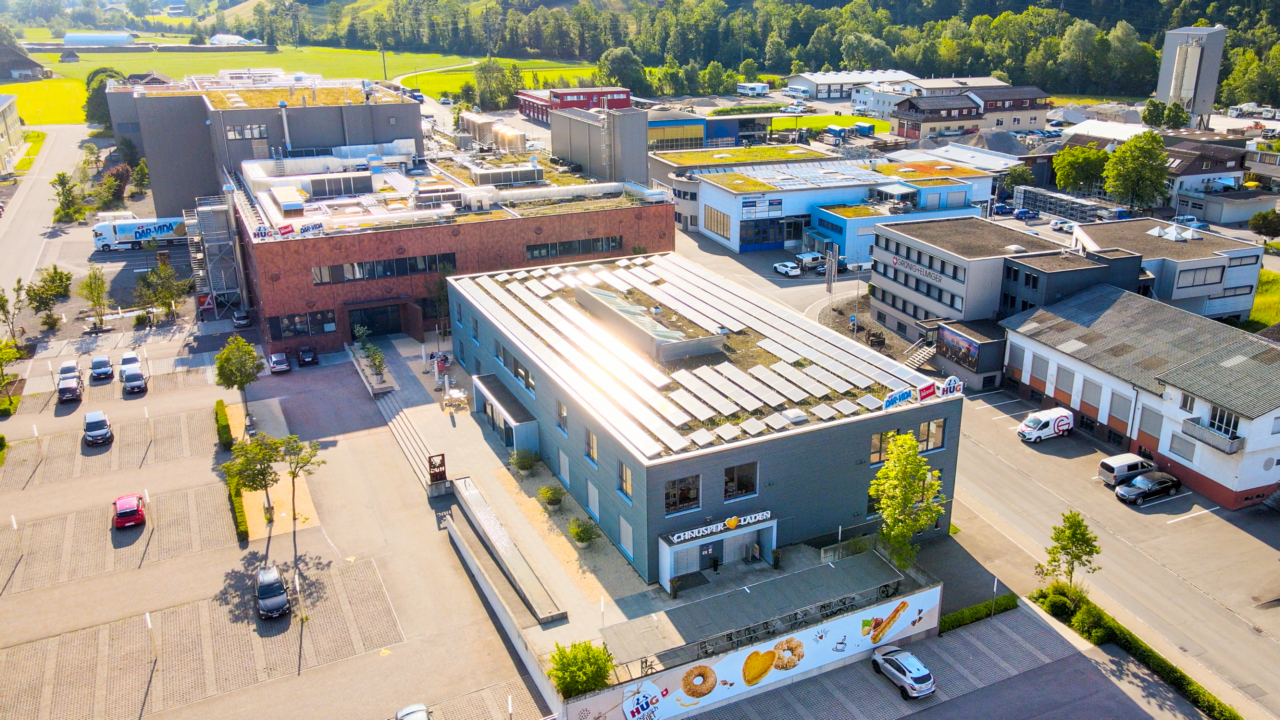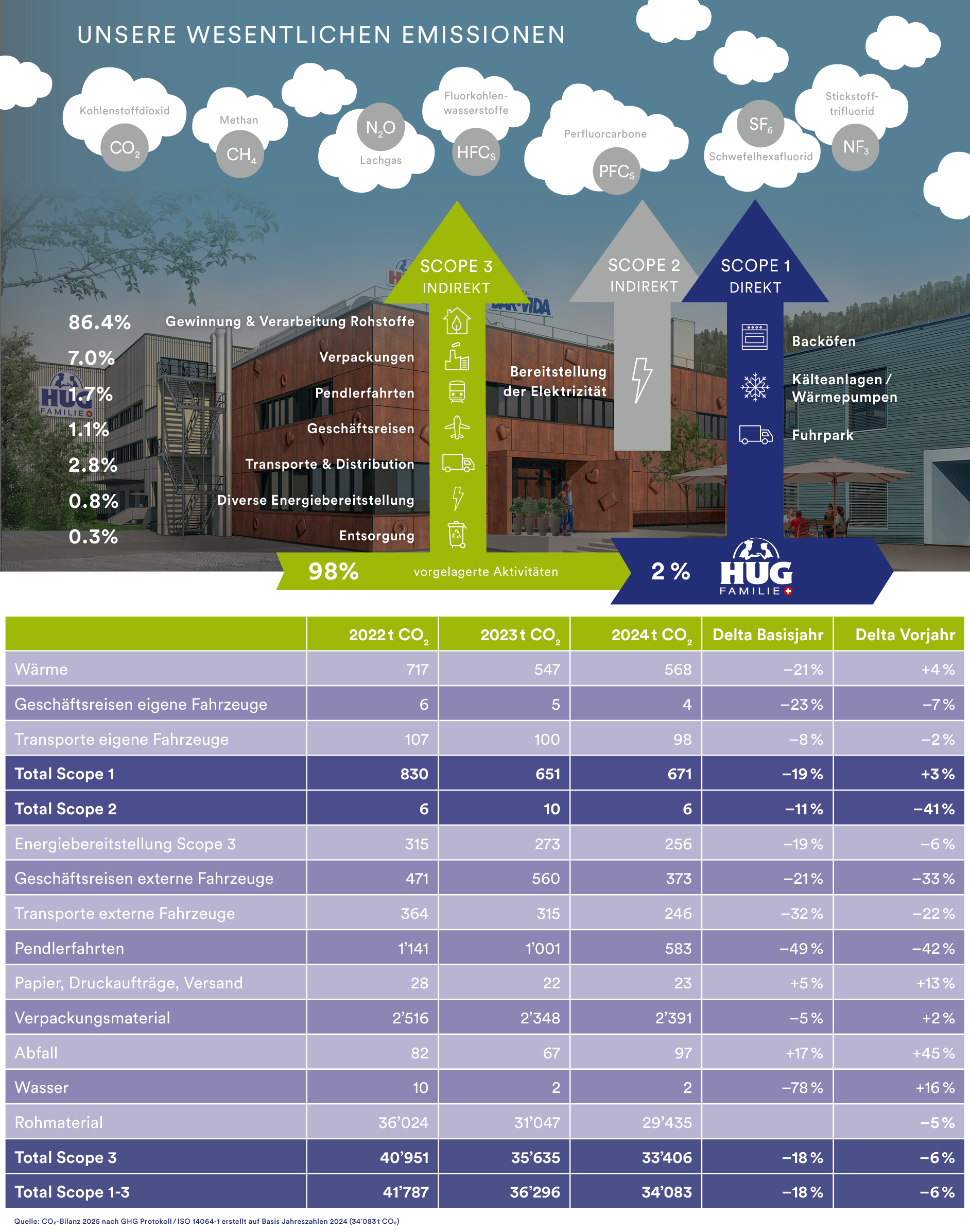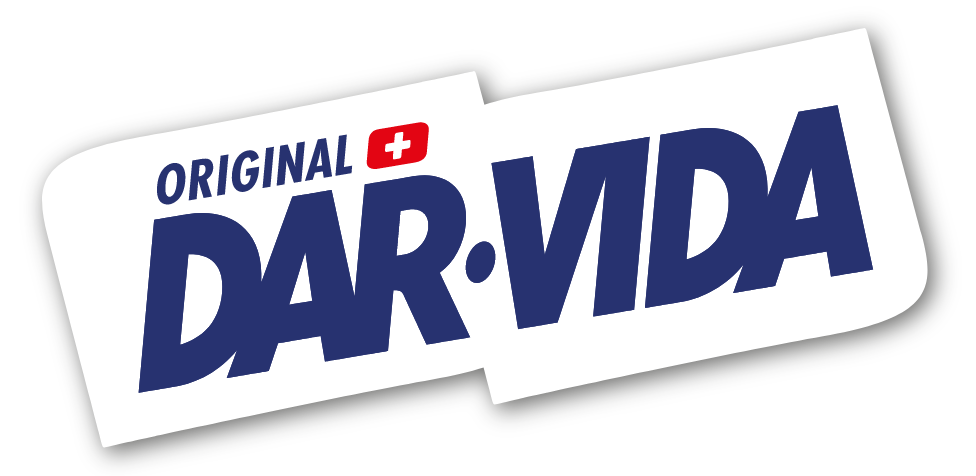 Energy & climat
Energy & climat
Science Based Target Initiative Reporting
Our SBTi validated climate protection targets
We set scientifically validated climate protection targets based on the Science Based Target initiative framework. We are therefore committed to reducing our operational CO₂ footprint by 42 percent by 2030 compared to the base year 2022 and we want to achieve net zero by 2035.
SBTi target achievement at a glance
According to the latest CO2 accounting by Swiss Climate, we are on track to meet the SBTi target.

Our carbon footprint: methodology and accounting boundaries
We prepared our first carbon footprint for the year 2021 – in accordance with the requirements of the ISO 14064-1 standard and the accounting principles of the GHG Protocol, which also form the basis of the Swiss Climate Label. Since then, we have been continuously improving the quality of our data.
The operational system boundaries were defined in accordance with the recommendations of the GHG Protocol. For HUG AG, this includes the two sites in Malters and Willisau.
The operational system boundaries are listed below.
In Scope 1:
In Scope 2:
In Scope 3:
Outside the system boundaries – Scope 3 screening
For the 2023 financial year, emissions along the value chain that were not included in the balance sheet were identified through additional calculations and screening, amounting to 32,247 tonnes of CO2. In this context, the ‘raw materials’ category in particular should be highlighted as a relevant source of emissions, accounting for almost 81 per cent of this additional category. Raw materials are excluded from the label as they do not need to be included according to the SBTi's SME Streamline Path. Due to the relevant quantity of raw materials, these are taken into account for measures and accounted for annually.
Our carbon footprint in 2024
For the 2024 accounting year, the emissions reported within the system boundary amount to 4,646 tonnes of CO2. The largest sources of emissions are packaging materials, the heat category and commuting. Together, these account for 72 per cent of the total.

Our measures in Scopes 1 & 2
Implemented and recurring measures:
Planned measures:
Our measures in Scopes 3
Implemented and recurring measures:
Compliance & Audits
We hold the Swiss Climate Bronze Label and have a climate strategy that is firmly anchored in our management team. The label confirms that we implement integrated CO₂ management with clear action plans and ambitious reduction targets. In addition, our carbon footprint is verified by an independent external audit – part of our compliance and proof of our transparency and commitment.




